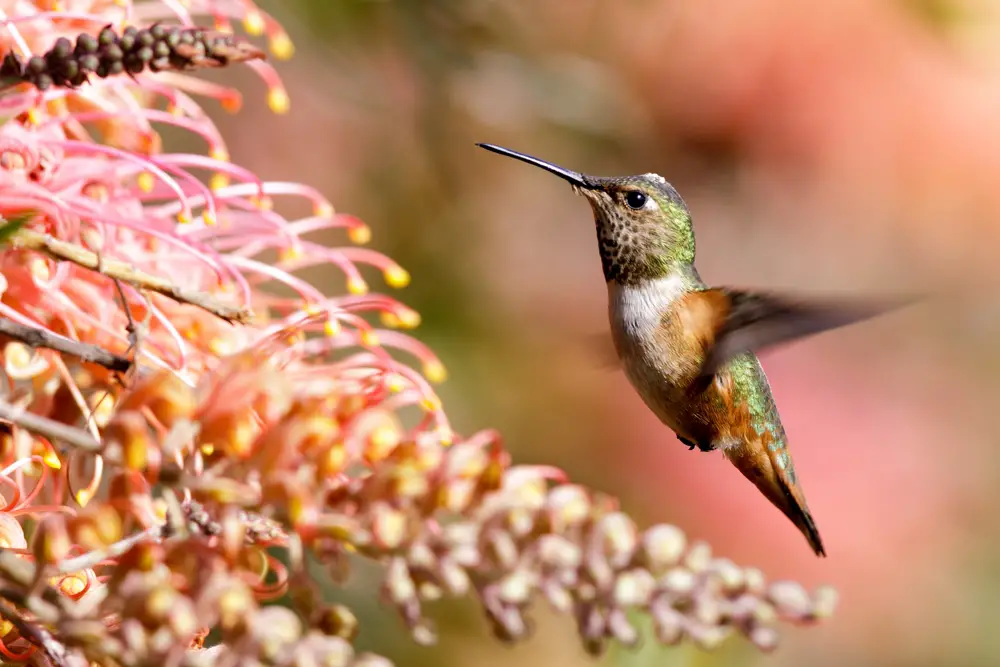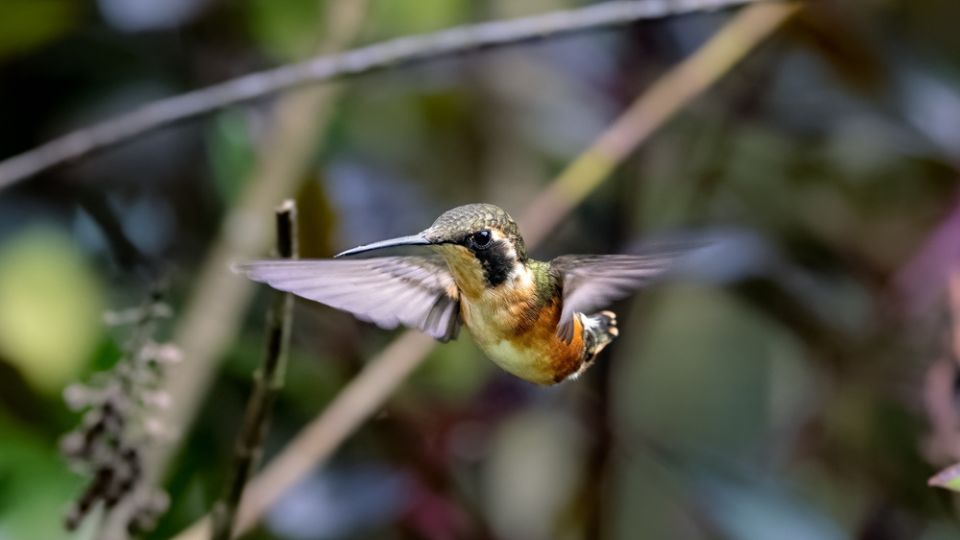Hang hummingbird feeders in early April. Hummingbirds migrate to Wisconsin by late April and leave by October. The Ruby-throated is most common, with five other species occasionally reported. In late February, these tiny birds migrate north from Central America and reach Wisconsin by early spring.
About 14 species of hummingbirds regularly visit North America. The rest of the species stay in Central and Southern America. Hummingbirds beat their wings almost 50 times per second and can even fly backward. The Ruby-throated and Rufous Hummingbird can be found in Wisconsin during most months of the year.
Four other species are reported as accidental vagrants to Wisconsin. Hummingbirds migrate twice yearly, once in the spring and once in the fall. Slight environmental changes tell each hummingbird when it’s time to migrate. Each hummingbird migrates alone, adhering to the internal rhythm of that particular bird.
Table of Contents
When Should I Put Out Hummingbird Feeders In Wisconsin
Put hummingbird feeders out in early April. In late February, these tiny birds migrate north from Central America and reach Wisconsin by early spring. Each hummingbird typically follows the same path during both spring and fall migration. Hummingbirds even visit the same feeding sites during each spring migration.
When they first arrive in Wisconsin, sightings will be rare. Males are setting up territories, and females are building nests. Sightings become more common in mid-May as more hummingbirds arrive and females begin caring for their young. The best time of year to see more hummingbirds is in late summer and early fall.
The Most Common Hummingbird In Wisconsin
The Ruby-throated Hummingbird is the most commonly reported hummingbird in Wisconsin. Male Ruby-throated arrive in mid-April. By mid-May, female Ruby-throated Hummingbirds arrive and begin building nests. Male hummingbirds find a female and begin courtship dives, hoping to impress the female enough that she chooses to mate with him.
Ruby-throated Hummingbirds breed in the eastern US and Canada during the spring. Females have two broods per season. Each brood consists of two young. It takes a female between 4 and 5 weeks to raise each brood from eggs to fledglings, ready to leave the nest. Some Ruby-throated may stay in Wisconsin year-round, but most migrate south to Texas, Mississippi, Florida, Georgia, or Mexico during fall migration.
Ruby-throated Hummingbirds, like all hummingbirds, have a fast metabolism and must constantly eat to maintain their body function. In cooler weather, they need to eat even more during the day as their body works harder to warm them. If Wisconsin has late-season snow or frost after hummingbirds have arrived for the spring, they enter torpor. Torpor allows them to hibernate for a period of time and slows down their body, so they require less food.

Feeding hummingbirds in Wisconsin
Hummingbirds eat sugar water, flower nectar, and small insects. Make DIY hummingbird nectar for both migrating hummingbirds and seasonal residents. Follow these steps below.
- Boil 4 cups of water
- Add 1 cup of white table sugar
- Stir to dissolve and continue boiling for 2 minutes
- Let the sugar water come to room temperature
- Fill your clean hummingbird feeders and hang them back up
You can store leftover hummingbird nectar in the fridge in a sealed container. Don’t add honey or artificial sugars. These sweeteners can put hummingbirds at risk for illnesses. Keep hummingbird feeders away from other bird feeders, so the bigger birds don’t invade the hummingbirds’ space.
How To Create A Hummingbird Garden in Wisconsin
As mentioned above, hummingbirds also need a variety of flowers and insects to feed from. Hummingbirds identify the color red easily, so they are drawn to red flowers. They have long bills (beaks) and tongues, so they target deep tubular flowers.
There is typically less competition for tubular-shaped flowers since not all pollinators can get far enough inside the flower to get the nectar. Hummingbirds will feed from most flowers but are drawn specifically to red tubular flowers for those reasons.
Consider planting:
- scarlet salvia
- foxglove
- hostas
- lobelia
- scarlet runner bean
Flowers draw insects, supplying hummingbirds with their other necessary food source. Check out this resource from the University of Wisconsin-Madison for more information about creating a garden and attracting hummingbirds in Wisconsin.
When Should I Take Down Hummingbird Feeders In Wisconsin?
Leave hummingbird feeders up until there have been no hummingbird sightings in your area for a couple of weeks. Hummingbirds leave northern Wisconsin first, making their way through southern parts of the state. Generally, though, take down hummingbird feeders in late October.
Hummingbirds leave Wisconsin beginning in late August or September. Migrants from the north pass through Wisconsin on their way to the Gulf Coast, southwestern US, or Mexico. Leaving feeders up until late October will make sure all migrant hummingbirds have food sources during fall migration.

Hummingbirds Seen Occasionally In Wisconsin
Rufous Hummingbird
- The second most common hummingbird reported in Wisconsin.
- They breed in Alaska, Canada, and California.
- Males are distinguished by their red-orange feathers and red throat (gorget).
- Extremely aggressive towards other birds and animals.
- In 2018, three Rufous Hummingbirds were banded during the winter—1 in Milwaukee.
Allen’s Hummingbird
- Rare in Wisconsin
- Inhabit the California Coast and western Mexico
- Males have a red-orange gorget and green back feathers
Anna’s Hummingbird
- Rare in Wisconsin
- More vocal than other hummingbirds
- Typically found in California, Oregon, and British Columbia
- Males have rosy-red crowns and gorgets
- Males have similar coloring to Costa’s Hummingbird, but Costa’s have a longer throat patch extending down their sides
Broad-billed Hummingbird
- An accidental vagrant in Wisconsin
- Typically found in Mexico, Arizona, and New Mexico
- Males have a blue throat and iridescent green top and underbelly feathers
- Males also have a red bill that is black near the face
- Females have more gray and white feathers, with a white strip above the eye
Mexican violetear
- An accidental vagrant in Wisconsin
- Typically found in Mexico and Central America, but known to wander through the US
- Males are brilliant green with a violet spot on the chest
- Males also have a purple-blue band along the chin
- Females are slightly duller in color

